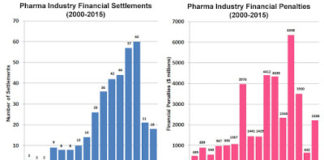 Photo by Max Talbot-Minkin. The original photo is here.
Photo by Max Talbot-Minkin. The original photo is here.The Lunesta moth — shown above in an out-take from a TV ad — is being mothballed!
The new Lunesta sleep-aid medication TV ad that aired on NBC Nightly News last night did not focus on the moth flitting from house to house in the dead of night. In fact, I don’t even remember the moth being there at all! Perhaps, despite its pleasing and soothing green color, the moth was too frightening? I don’t know about you, but I emphasize with the guy in the above photo. Who can fall asleep with a moth flitting around your room. The flapping of wings would drive me nuts, not to mention the eerie glow!
The new ad may be the last hurrah of the McCann agency, which is being replaced by Kaplan Thaler — the folks that brought us the ill-fated Jarvik Lipitor ads. This is a big coup for Kaplan — Sepracor, the company that markets Lunesta, spent $246.4 million on Lunesta direct-to-consumer (DTC) ads in the first 9 months of 2007 (I got this number from the March 2008 issue of DTC Perspectives magazine, which gets its data from Nielsen Monitor-Plus). That’s way more than the next highest big spender — Ambien CR — which spent $130.6 million in the same period (see the nice graph in a previous post: “Lunesta’s Ad Spending Spree and Other DTC Oddities“). NOTE: These numbers do not include ad agency or production fees!
Any way, the new ad did not have much of a role for the loony moth because it focused more on being awake and alert during the day than being asleep at night. And there’s no place for a moth in daylight.
The ad basically showed a woman getting up after a restful night’s sleep and being very chipper during the day as a school teacher, willing and able to take on her third-grade kids and encourage them to make music with kitchen utensils.
The ad’s tag line is “A great tomorrow starts tonight.” I’m happy to see that the Lunesta Web site is in sync with the TV ad. The site still shows the moth in the intro screen — but only briefly flying across the screen before a dissolve to an image of a woman sitting up in bed in broad daylight, ready to take on the world. [Where I am, daylight savings time means getting up while it’s still VERY dark out there!]
There’s also a link to the “new” TV ad on the site, but (1) it doesn’t work for me using either my Firefox or IE browser, and (2) it doesn’t look like the ad I saw last night on TV. Maybe they are having some technical difficulties switching video files. Hey, Sepracor guys! Aren’t you glad I’m beta testing your product Web site?
Why would an agency that will soon be replaced come up with a new ad at this time? DTC Perspectives claims that “sales of Lunesta, estimated at roughly $600 million in 2007, apparently did not meet company expectations.”
Let’s do the math
In 2007, Sepracor spent about $27.3 million per month on DTC advertising for Lunesta — I assume this includes TV, print, radio, billboards, Internet ads, etc. but not search engine marketing (which would only be about 1-2% of the total DTC spend in any case, so let’s ignore that). In addition, it must have spent three times that — or about $82 million per month — on detailing and physician marketing, which on average, is about 3X DTC, not including the wholesale cost of samples given to physicians. But, let’s be conservative and say that the Lunesta physician promo budget in 2007 was only 2X the DTC budget or $54 million per month.
Do you see where this is going?
Negative marketing ROI and stock price
The total Lunesta marketing budget, therefore, may be $81 million per month or $972 million per year! If sales were only $600 million, then YEAH, Sepracor should be a tad disappointed! And if I held Sepracor stock I’d be a tad disappointed also. Negative ROI is directly related to Sepracor’s negative stock price growth (see chart below). QED and say good-bye to the moth as it is incinerated in the flame of creative ad agencies.
P.S. As much as I like DTC Perspectives and other pharmaceutical industry trade publications, I must say — “with all due respect” — they are a bit remiss in not doing this kind of analysis. Yes, they report the numbers, but it seems that only people like me have the inclination to calculate the relation between 9 months of DTC ad spend shown in a table on page 10 and the yearly sales number hidden in a paragraph on page 6! I just assume everyone would think to check the Sepracor stock price and see if there were any relation to marketing ROI.










![6 Digital Tools at the Center of Healthcare Digitalization [INFOGRAPHIC]](http://ec2-54-175-84-28.compute-1.amazonaws.com/pharma-mkting.com/wp-content/uploads/2021/04/6DigitalTools_600px-100x70.jpg)




